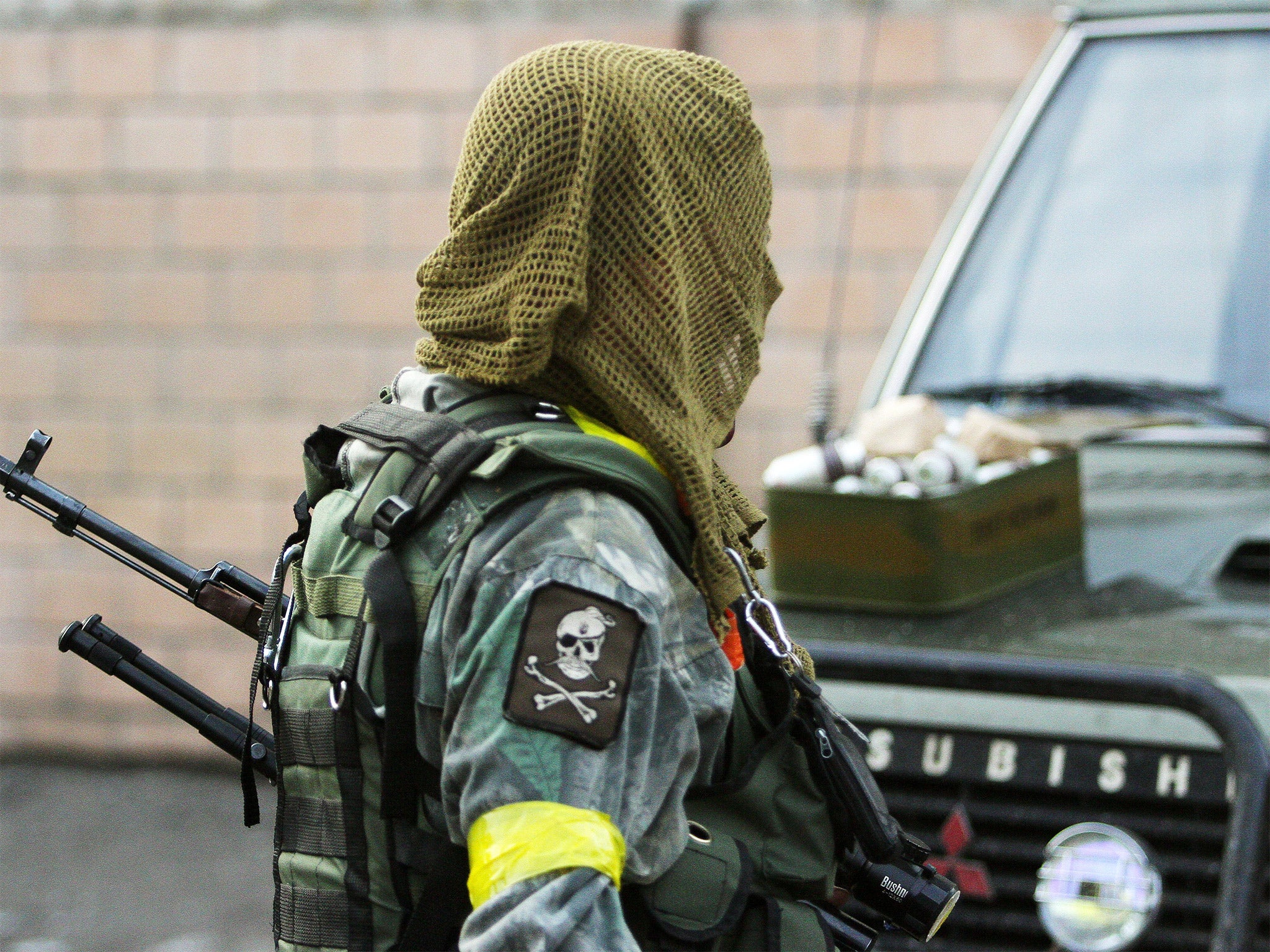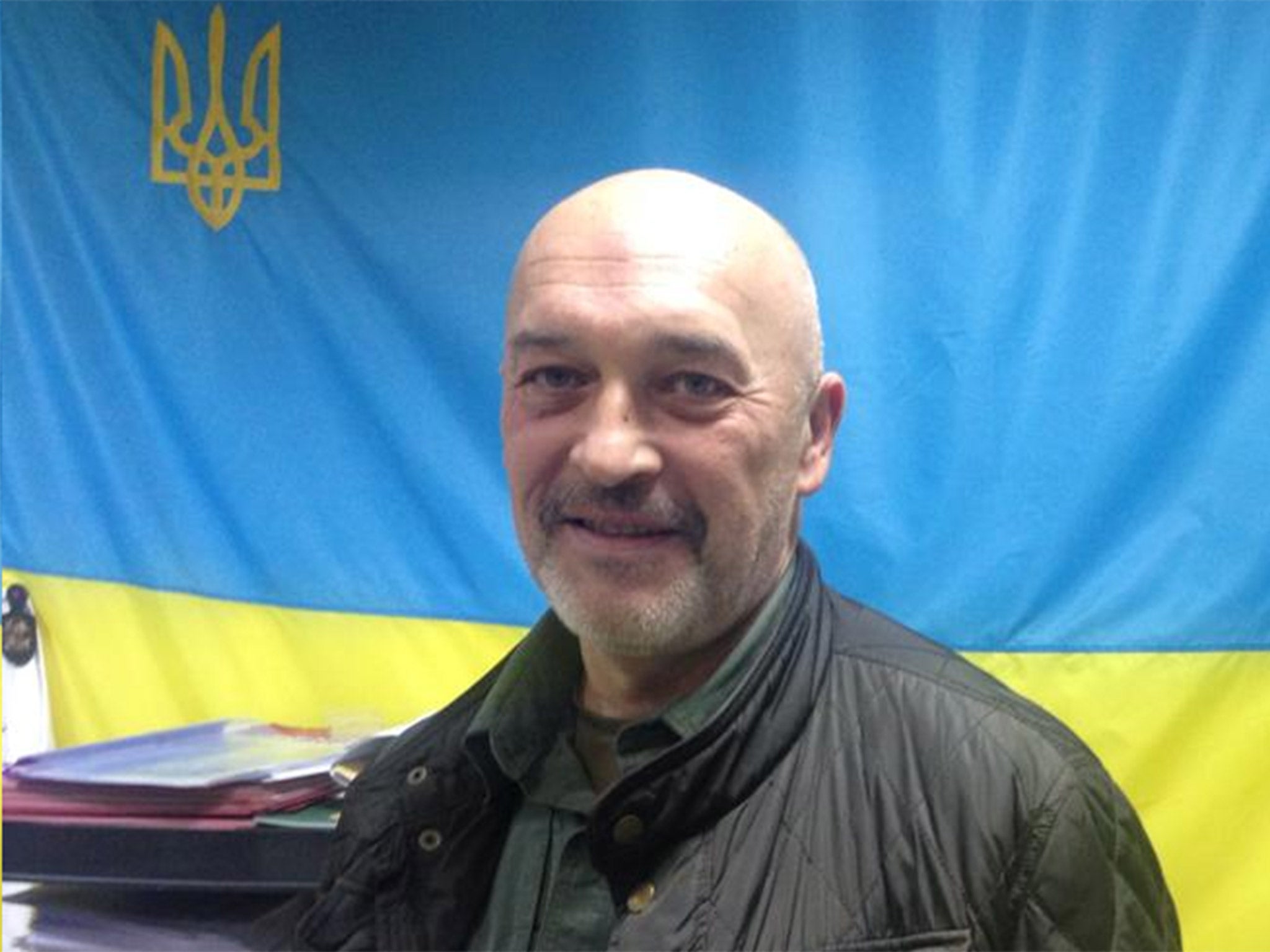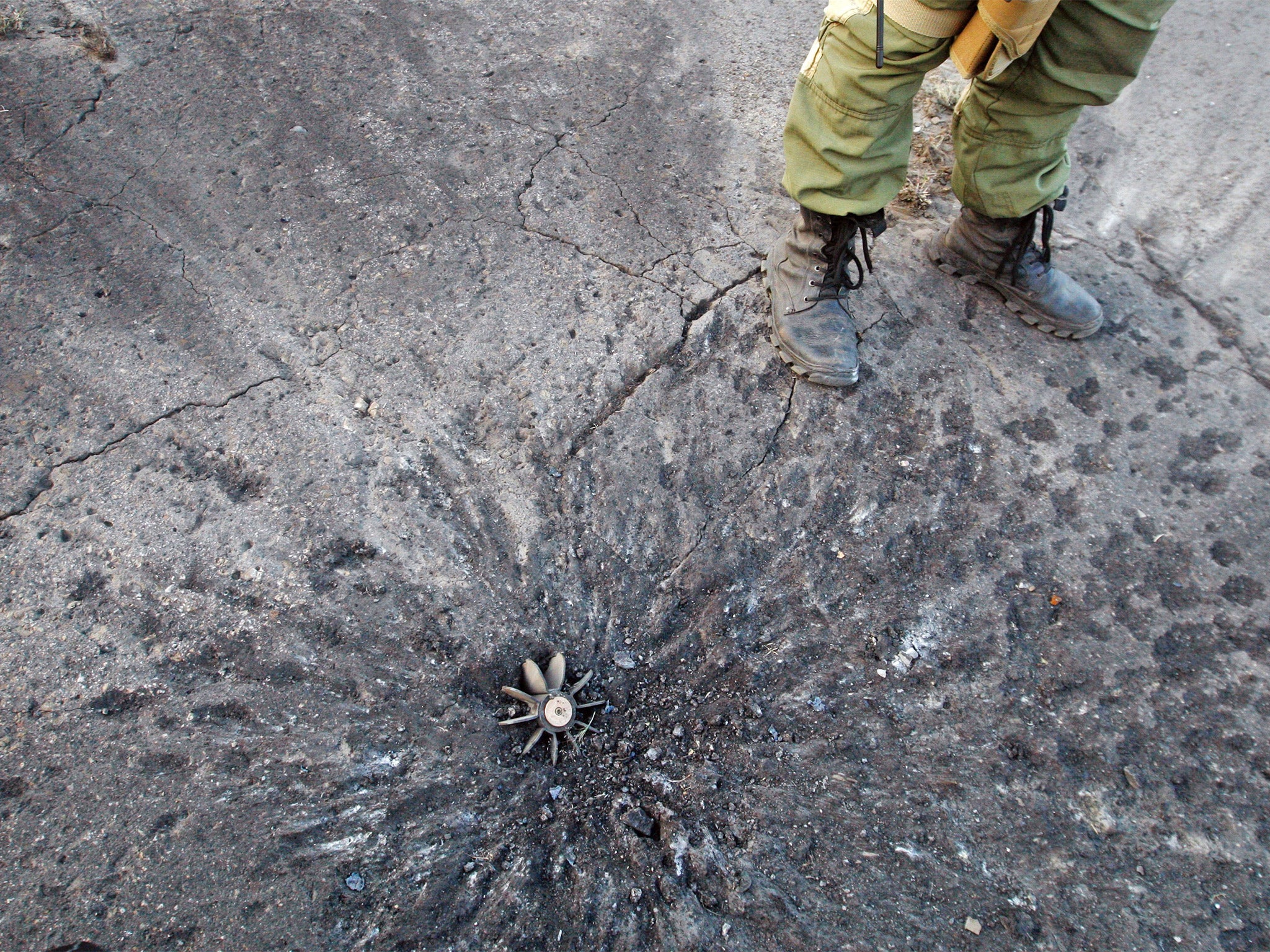Ukraine crisis: Fragile 'ceasefire' gives way to an increased wave of military activity in the east
Spokesman claims region has been 'flooded with a large number of enemy personnel and advanced weaponry'

It has been a year of permanent stress for Georgy Tuka. What with raising enough money to provide Ukraine’s “Maidan warriors” with basic body protection, and stepping into the governmental void, the 50-year old entrepreneur-turned-activist has had no time to rest.
“The work is relentless and we all need a break, but I doubt I’ll see the seaside for another three to five years,” he told The Independent. Mr Tuka currently devotes most of his waking hours to organising supplies to the front line in the ongoing battles against separatists in the east. His Army SOS volunteer organisation has been providing soldiers with everything from underwear to specialist sniper rifles.
When Army SOS began its work, flak jackets and food supplies were the real concern. Today, the issues are inadequate communication systems – many Ukrainian forces are still using 30-year-old Soviet systems – and an acute shortage of Kevlar helmets, boots and winter clothing. With temperatures rapidly approaching freezing in the east, perhaps only half of the estimated 50,000 Ukrainians soldiers stationed in the military zone have clothing suitable for cold weather.

Donations, which come from ordinary Ukrainians and businessmen, are now back to the level they were at the height of the campaign in the summer, says Mr Tuka. And the requests for winter clothes are coming in thick and fast. But the request Mr Tuka hears most of all is: “When will we be allowed to fight again?”
The region’s fragile “ceasefire”, which only existed where it did not matter militarily, now has given way to an increased wave of military activity. In recent days, several columns of armed vehicles have been observed in the regions controlled by Russian-backed fighters.
Fighting has become more frequent around the region’s most strategically sensitive points: in Mariupol, a port city, Donetsk airport, Debaltsevo, a major transport hub, and Schastya, the location of a power station. There was panic in many districts in Donetsk over the weekend due to increased shelling near the airport. Today, government forces were redeploying in preparation for a possible new offensive by rebels. “We are repositioning our armed forces to respond to the actions of the [rebel] fighters,” the Defence Minister Stepan Poltorak said. “I see my main task is to prepare for military action.” Nato said it had seen columns of Russian military equipment entering Ukraine. “Russian tanks, Russian artillery, Russian air defence systems and Russian combat troops” were sighted, said the US General Philip Breedlove in Bulgaria.
Over the period of the “ceasefire”, launched after the Minsk agreement on 5 September, Ukrainian forces regrouped and dug in two lines of defences on the border of the breakaway “republics”. The key battles in the region have been ongoing for several weeks without much territory changing hands. Without significant reinforcements from the east, many now see the status quo remaining unchanged.
Nevertheless, the military appears keen to heighten concerns of a possible Russian invasion. Speaking on Monday at his regular press conference, the military spokesman Colonel Andriy Lysenko said the region had been “flooded with a large number of enemy personnel and advanced weaponry”. As proof, he presented a video showing a convoy supposedly moving from Russia to Snizhne in Donetsk region. The problem, as military bloggers later pointed out, was that the video was shot in March in an area now controlled by Ukrainians. Embarrassing, but by no means the worst mistake the Ukrainian military has made – blunders that have been increasingly infuriating activists.
“I can’t work with these guys”, admitted Mr Tuka. “All I see are lies and deceit and dead Ukrainians.” The activist said he avoided working directly with government departments, which are “leaky”, preferring instead to operate through direct relationships with forces in the east.
Aleksandr Zolutukhin is one of a number of returning soldiers who shared Mr Tuka’s frustration with the new authorities. He served as a sniper and company leader within the Aidar battalion, a controversial and anarchic assault unit based in Luhansk region. Formally subordinate to the Ministry of Defence, but in practice only answerable to themselves, Aidar was involved in some of the fiercest fighting over the summer, and as many as 240 of its men died in fighting.

After going public with concerns about military command, Mr Zolutukhin says he found himself fighting powerful vested interests. Bureaucrats began blocking even simple things like registering the injured and dead so that their families could receive benefits. There were claims that the soldiers were not actually involved in frontline fighting. Visibly emotional, Mr Zolotukhin asked how he was supposed to explain this position to the families. “Some of us are fighting a war; for others it’s more an opportunity to get rich,” he said.
According to Mr Zolotukhin, part of Aidar’s military command had taken up criminal practices – using the uniform as a way of appropriating cars, property and weapons. He claims he saw how some of the officers of this “other Aidar” carried “serious” sacks of cash around with them, and used a white powder he assumed to be cocaine. He also said he witnessed how they planted a grenade in someone’s car, as a pretext to steal it.
When Mr Zolotukhin and a group of fellow soldiers returned to Kiev, he visited the main seats of government, including the Minister of the Interior, Arsen Avakov, to register his concerns. According to Mr Zolotukhin, the minister “then suggested we sort the problem out ourselves”. “We would put ourselves into jail if we followed such advice,” Mr Zolotukhin said.
The future of the contentious Interior Minister is one of the questions being most actively discussed in Kiev today. Concerned with the power wielded by his enlarged and militarised ministry, President Petro Poroshenko is said to have been keen on a reshuffle of the position. But his bloc did much worse than anticipated in the recent elections, while Mr Avakov and the Prime Minister Arseniy Yatsenyuk’s party were the unexpected winners. Speaking with The Independent, a high-ranking official confirmed that Mr Avakov’s position remained one of the main sticking points in the ongoing talks on the new coalition. On Monday, five parties signed a “coalition project”, but the source noted there is as yet little agreement on detail.
The other thing that might change with the new political calculus in Kiev is policy towards the east. Given the more populist, anti-Russian and hawkish positions espoused by Mr Yatsenyuk’s victorious People’s Front party, Ukraine’s response to increased military activity is unlikely to be a new ceasefire.
Mr Tuka seems sensible to have cancelled his seaside holidays.
Join our commenting forum
Join thought-provoking conversations, follow other Independent readers and see their replies
Comments
Bookmark popover
Removed from bookmarks